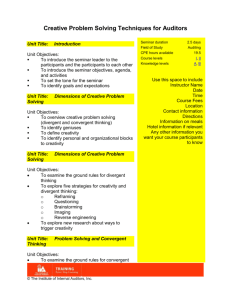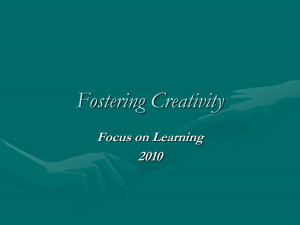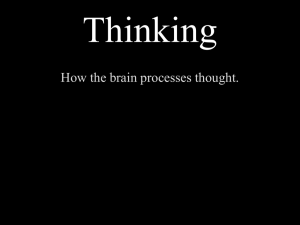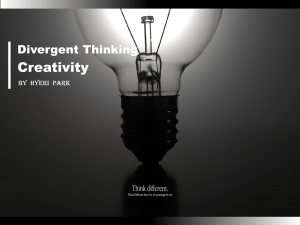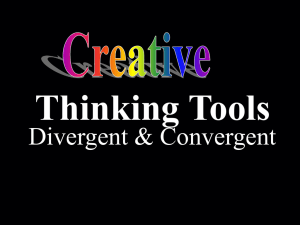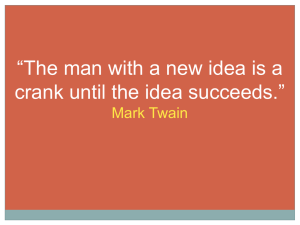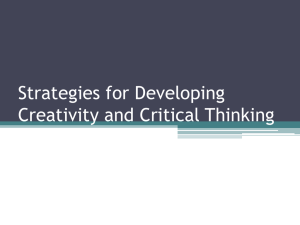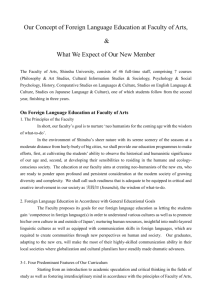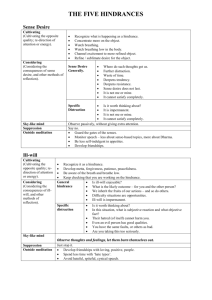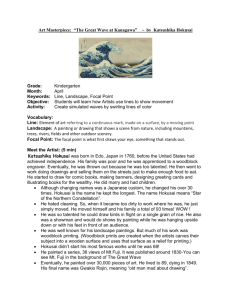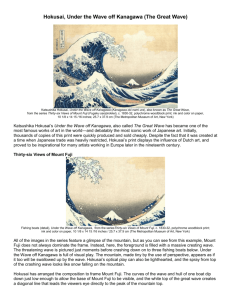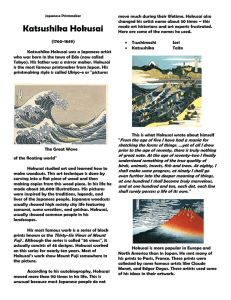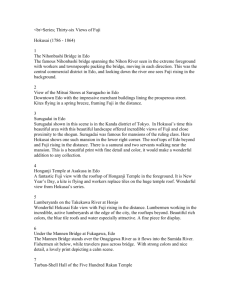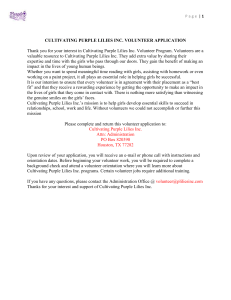3D design Ch. 5 & 6
advertisement
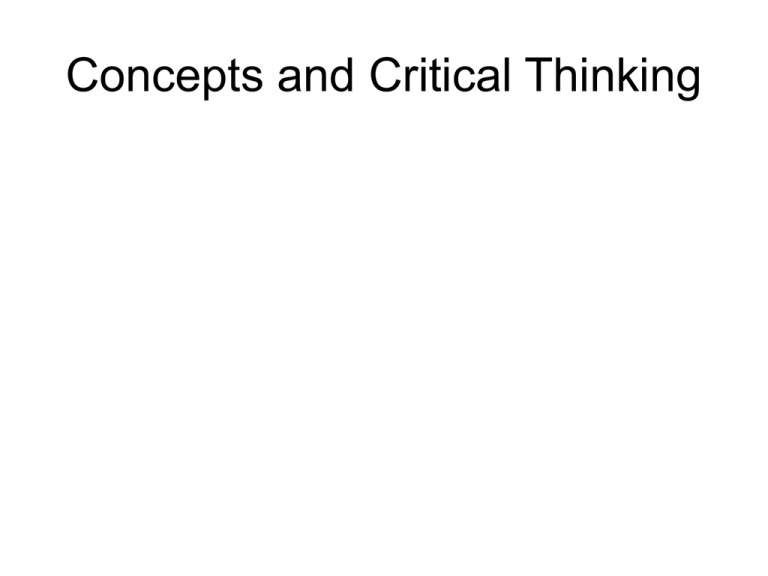
Concepts and Critical Thinking Cultivating Creativity: Seven Characteristics of Creative Thinking 1. Receptivity: Creative people are open to new ideas and welcome new experiences Cultivating Creativity: Seven Characteristics of Creative Thinking 2. Curiosity: A good designer brings and insatiable curiosity to each project Cultivating Creativity: Seven Characteristics of Creative Thinking 3. Wide Range of Interests: With a broad knowledge base, a creative person can make a wider range of connections Cultivating Creativity: Seven Characteristics of Creative Thinking 4. Attentiveness: Realizing that every experience is valuable, creative people pay attention to seemingly minor details Cultivating Creativity: Seven Characteristics of Creative Thinking 5. Connection Seeking: Seeing the similarity among seemingly disparate parts has often sparked a creative breakthrough -Rosetta stone Cultivating Creativity: Seven Characteristics of Creative Thinking 6. Conviction: Creative people value existing knowledge Cultivating Creativity: Seven Characteristics of Creative Thinking 7. Complexity: To be fully effective, a creative person needs to combine the rational with the intuitive Creative people often combine: • • • • • • • • Physical energy with a respect for rest Savvy with innocence Responsibility with playfulness Risk taking with safe keeping Extroversion with introversion Passion with objectivity Disregard for time with attention to details Modesty and Pride • Goals you set are goals you get. Establishing priorities and setting appropriate goals will help you achieve your potential. Good goals are challenging but attainable, compatible, self-directed, clearly defined, and temporary. Deadlines encourage completion of complex projects • Collaborative work can help us expand our ideas, explore new fields, and pursue projects that are too complex or time consuming to do alone Diane Gallo and Nancy Callahan, Storefront Stores, 1999 Problem Seeking and Problem Solving Problem Seeking: The Design Process • 1. What is needed? • 2. What existing designs are similar to the design we need? • 3. What is the difference between the existing designs and the new design? • 4. How can we transform, combine, or expand these designs? Marcel Breuer, Armchair, 1925 Alvar Aalto, Paimio Lounge Chair, 1931-33 Overstuffed Chair Adirondack Chair Charles and Ray Eames, Side Chair, Model DCM, 1946 Frank Gehry, Cross Check Armchair, 1992 The Fine Art Process • Contemporary sculptors, filmmakers, painters, and other fine artists generally invent their own aesthetic problems Sources of ideas • Transform a common object • Study nature • Visit a museum Characteristics of a Good Problem • • • • • • Significant Socially Responsible Comprehensible Open to Experimentation Ambitious yet achievable Authentic Convergent and Divergent Thinking • Convergent thinking involves the pursuit of a predetermined goal, usually in a linear progression and using a highly focused problem solving technique: – – – – – Define the Problem Do Research Determine your objective Devise a strategy Evaluate the results Convergent and Divergent Thinking • In divergent thinking, the means determines the end. The process is more open-ended; specific results are hard to predict. Divergent thinking is a great way to generate completely new ideas: – – – – The problem definition is elusive or evolving A rational solution is not required A methodical approach is unnecessary Deadlines are flexible Ray Rogers, Vessel, 1984 Vera Liskova, Porcupine, 1972-80 Beau Dick, Mugamtl Mask (Crooked Beak), 1993 Yves Tanguy, Multiplication of the Arcs, 1954 Giorgio de Chirico, The Mystery and Melancholy of a Street, 1914 Brainstorming • Brainstorming plays an important role in both convergent and divergent thinking. It is a great way to expand ideas, see connections, and explore implications: -Make a list -Use a Thesaurus -Explore Connections -Keep a Journal Visual Research Examples of thumbnail sketches Model making • A maquette is a well developed threedimensional sketch • A model is a technical experiment or a small-scale version of a larger design • A prototype is a well developed model, as with the fully functional prototype cars developed by automobile companies Peter Forbes, Models for Shelter/Surveillance Sculpture, 1994 Peter Forbes, Shelter/Surveillance Sculpture, 1994 Variations on a Theme • Professional artists rarely do just one painting or sculpture of a given idea-most do many variations before moving to a new subject Katsushika Hokusai, Thirty-Six Views of Mount Fuji: Under the Mannen Bridge at Fukagawa, 1830 (Edo period) Katsushika Hokusai, Thirty-Six Views of Mount Fuji: The Great Wave off Kanagawa, 1830 (Edo period) Katsushika Hokusai, Thirty-Six Views of Mount Fuji: Near Umezawa in Sagami Province, 1830 (Edo period) Leslie Leupp, Three Bracelets: Solidified Reality, Frivoulous Vitality, Compound Simplicity, 1984 Lisa Gralnick, Three Bracelets, 1988
